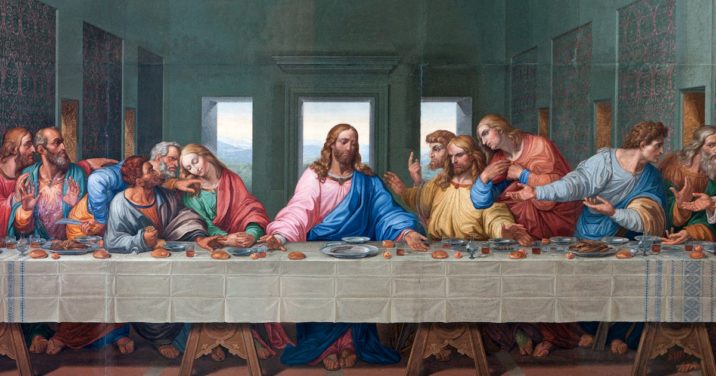This week we pause to remember Jesus’ life, death, and resurrection, and for many of us, that means attending special church services.
Many—if not most—churches have Good Friday services in addition to special Easter gatherings, but some churches also meet on Maundy Thursday.
Here are eight things to know about Maundy Thursday, plus three ideas for observing this holiday.
-
- Maundy Thursday celebrates the institution of the Lord’s Supper (Matt 26:26–29, Mark 14:12–25, Luke 22:15–20, John 13:1–17:26), and it’s observed on the Thursday before Easter (the day before Good Friday).
- It’s also sometimes called Holy Thursday or Covenant Thursday.
- Celebrated on the Thursday before Easter, Maundy Thursday remembers the events of the day before Jesus’ arrest.
- The events of Maundy Thursday focus on the Eucharist in the Synoptic Gospels. However, the Gospel of John explains the day in more detail. John begins with the pericope of Jesus washing his disciples’ feet (John 13:1–20), includes two of Jesus’ “I am” statements (John 14:6, 15:5), and ends with his High Priestly Prayer (John 17). In all four Gospels, the day’s events come right before Jesus’ arrest and crucifixion.
- Maundy Thursday gets its name from the new commandment (Lat. mandatum) Jesus gave in John 13:34.
- References to Maundy Thursday appear as early as Justin Martyr’s First Apology (c. 155–157) and Hippolytus’ liturgy (second century).
- The day was officially recognized as a Holy Day in AD 393 by the Council of Hippo.
- At a typical Maundy Thursday service, attendees confess their sins to God and take communion together. Some churches also include foot-washing, stripping the church’s decor, and Tenebrae (or extinguishing candles).
3 ideas for observing Maundy Thursday
- Read and meditate on the Gospel accounts of the Last Supper: Matthew 26:26–29; Mark 14:12–25; Luke 22:15–20; and John 13:1–17:26.
- Participate (or lead!) a Passover Seder with your small group or church. Even if you’re not Jewish and don’t celebrate Passover, the parts of the Seder help people remember Israel’s flight from Egypt and are rich with biblical significance for believers today.
- Read about Jesus’ time in the garden of Gethsemane after he fervently prayed to the Lord to “take this cup of suffering [wrath]” (Luke 22:42 NLT, AMP) from him and was then arrested: Matthew 14:36–56; Mark 14:32–50; Luke 22:39–53; and John 18:1–12. Compare what you read with passages about the “cup of wrath,” like Jeremiah 25:15–17, Psalm 75:7–8, and Revelation 14:1–20.
Works Cited
Provance, Brett Scott. Pocket Dictionary of Liturgy & Worship, The IVP Pocket Reference Series (Downers Grove, IL: IVP Academic, 2009), 85.
Cross, F.L. and Elizabeth A. Livingstone, eds., The Oxford Dictionary of the Christian Church (Oxford; New York: Oxford University Press, 2005), 1065.
Gregg, Larry D. “Maundy Thursday,” ed. David Noel Freedman, Allen C. Myers, and Astrid B. Beck, Eerdmans Dictionary of the Bible (Grand Rapids, MI: W.B. Eerdmans, 2000), 874.






